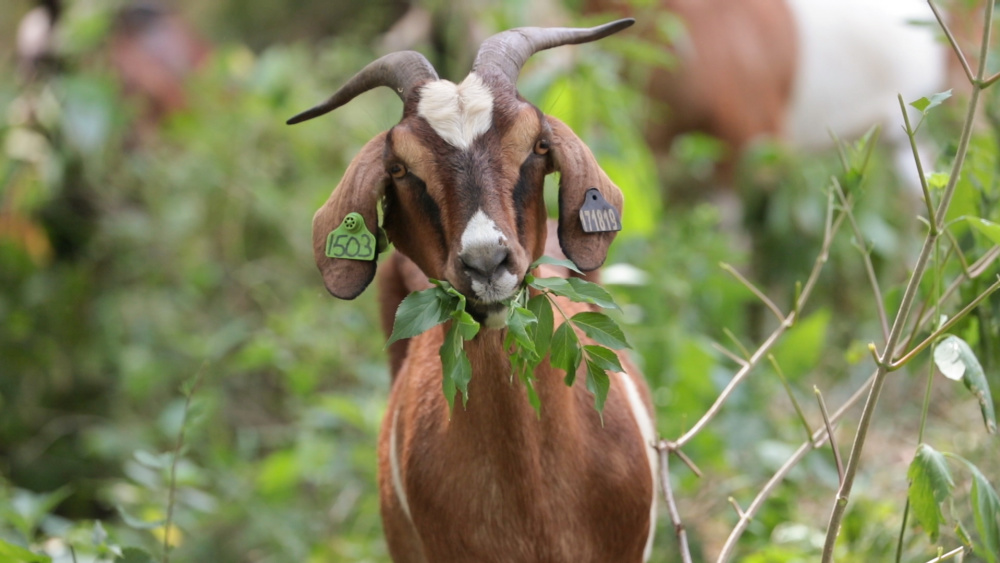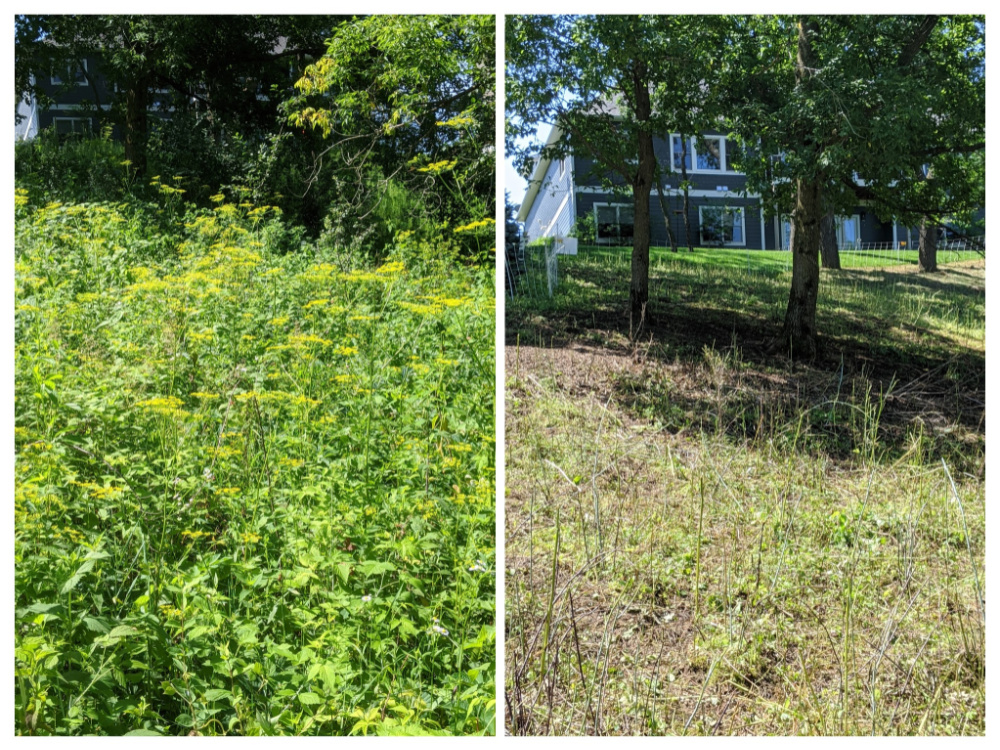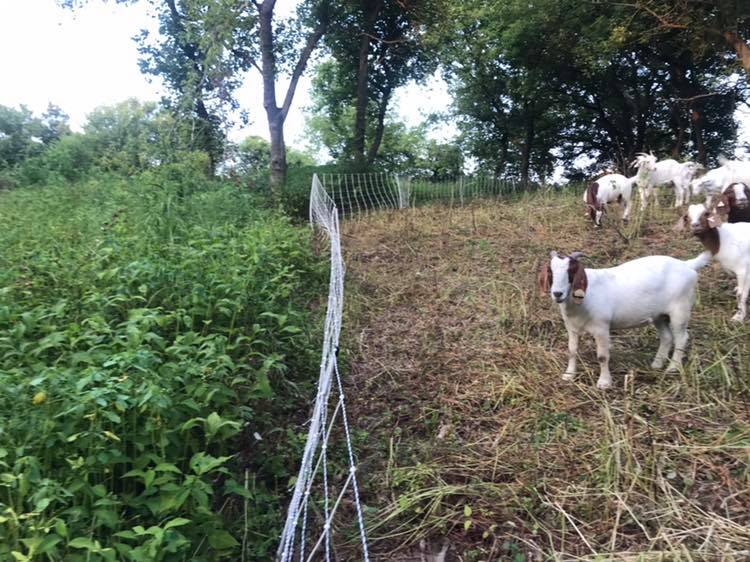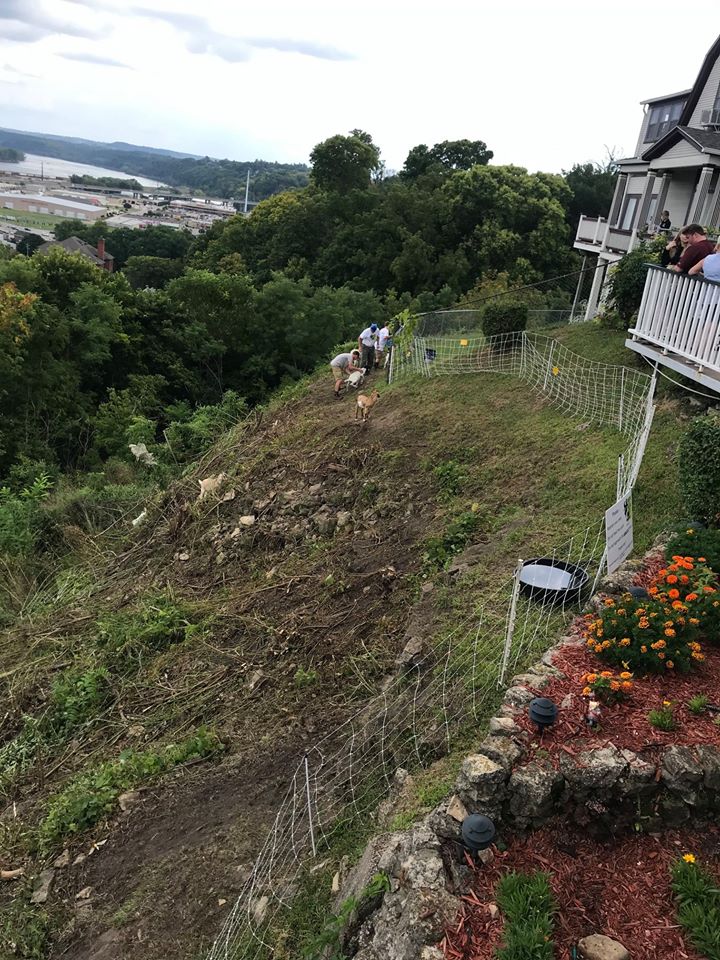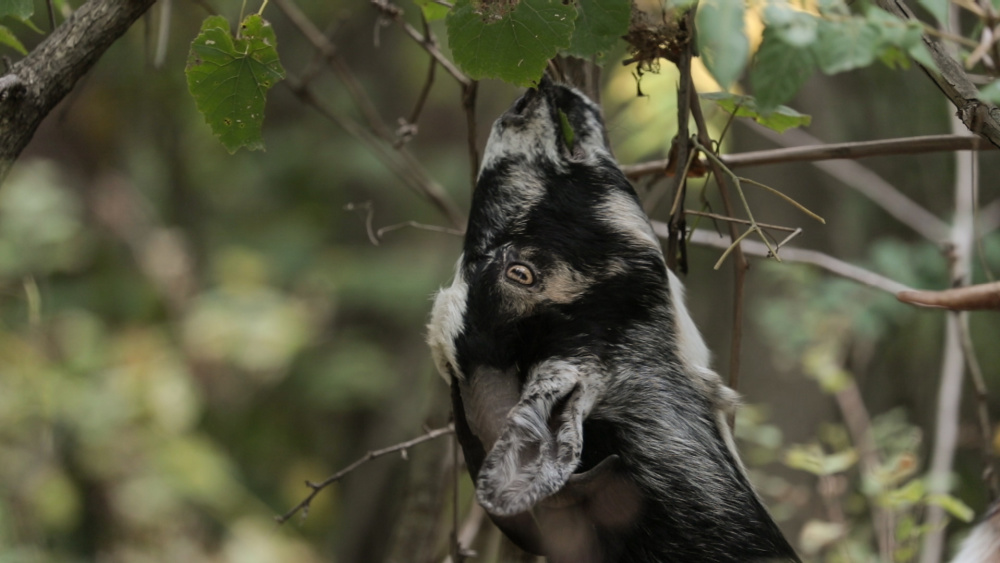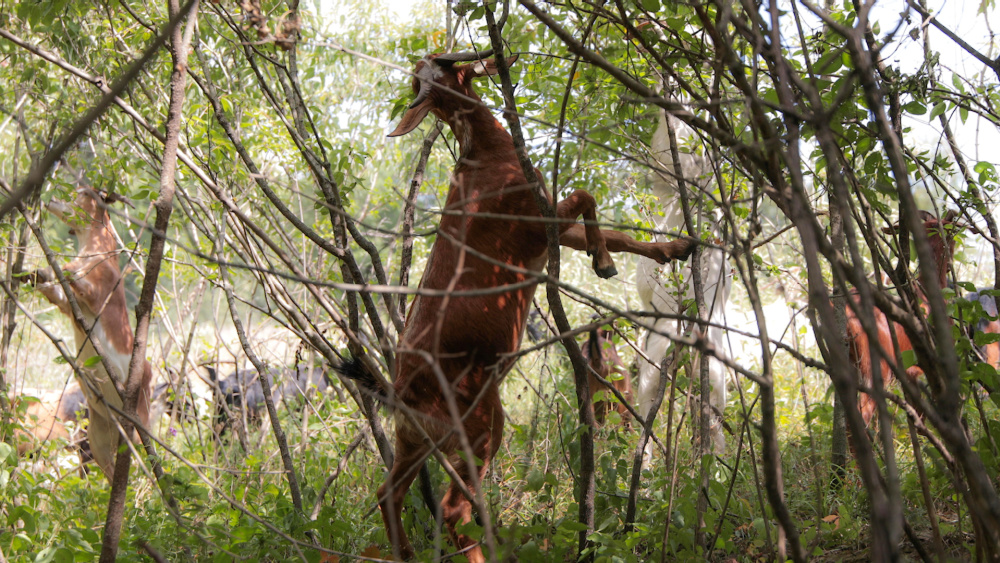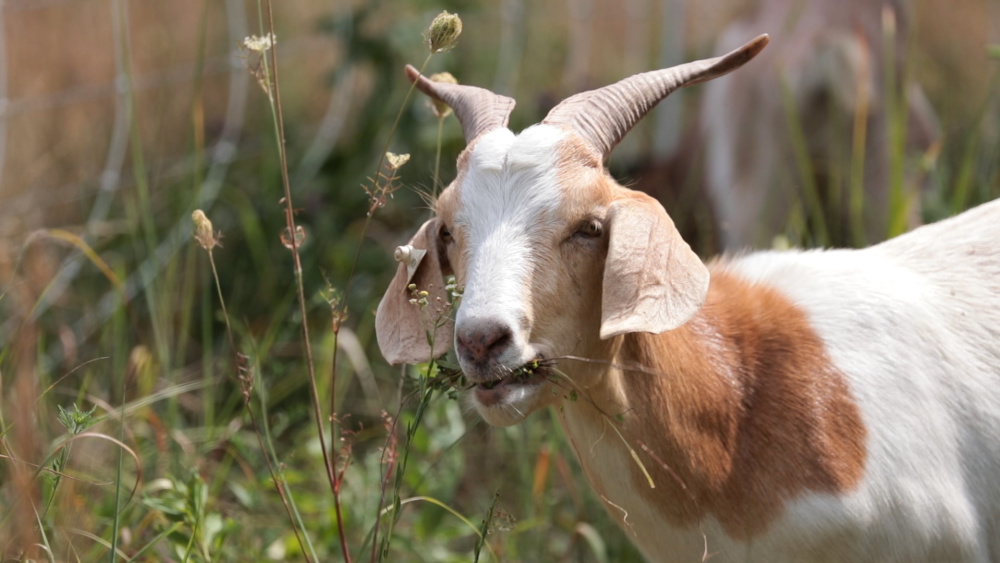I would like to thank Aaron Steele the founder of “Goats on the Go” for his contribution to the Winterset Veterinary Center’s blog. Aaron also began a podcast called Farm Dog recently that our readers may enjoy following as well. You can click on this link and it will take you to Farm Dog.
In 2012 I was at a weird crossroads. My family was enjoying living the rural life on our Story County acreage, but it seemed a bit artificial to live there without being involved in agriculture at least a little bit. It seemed wasteful to mow and care for our 3.5 acres as a giant lawn, but it was still too small to be farmed in the traditional Iowa sense. My wife and I were also raising three young boys who we felt would benefit from having some chores to do (character building, as my dad would say). And finally, my 9-to-5 office job was slowly killing me with boredom and lack of purpose.
So, we did what anyone would do. We bought goats! Six of them, in fact. The plan was to buy them in the spring and sell them in the fall with the hope of quickly recouping our investment and avoiding winter chores and feed purchases. But something happened along the way. We became enthralled with our goats. We wasted a good part of that summer sitting in lawn chairs next to the pasture watching their antics. Even antic-free moments were great therapy, as we found ourselves unwinding while they ate and rested. I loved pretending to be a farmer for a summer, and I started to wonder if I could raise meat goats as more than just a hobby.
That thought kicked into overdrive when we started to run out of pasture for the goats in that drought stricken summer. I’d read that goats would eat weeds and brush, so out of near desperation I enclosed a quarter-acre patch of weeds with portable electric fencing and moved them from their clean grass/alfalfa pasture to the brambles. We were astonished at the results. The weeds simply disappeared! The only evidence that remained of the weed patch was the most fibrous main stems of some of the plants.
Light bulb! What if I could raise more goats without investing in more land by feeding them on other people’s nuisance vegetation? And…what if they would pay me for it? It all sounded too good to be true, but in 2013 we set out to do some demo projects to prove to ourselves that the concept would work. It did. In fact, our little demo projects generated some buzz among the press and the public and the phone began to ring!
In those first few years, Goats On The Go® could only serve the area within about 45 minutes of Ames, but people from all over the U.S. (and beyond) had been reaching out to us wanting to start their own goat grazing businesses where they lived. In 2016 we began building a network of independent goat grazing businesses that all share the Goats On The Go® brand. These affiliates get access to training, support, and a bunch of other benefits as well. We now have 33 of affiliates across the U.S. plus one in Canada and one in Tasmania, Australia. (Shameless plug: Our affiliate serving the Winterset area is looking for a partner to keep up with demand!)
So how does targeted goat grazing work? We used portable electric fencing and a solar powered fence energizer to enclose the goats on concentrations of our customers’ nuisance vegetation. This might be poison ivy, multiflora rose, honeysuckle, wild parsnip, giant ragweed, or a mix of these and others. Sometimes our customers want to eliminate invasive plant species to promote native landscapes, but often they just find the vegetation to be annoying. We’ve worked on residential properties and acreages, parks and trails, golf courses, retired landfills, detention ponds, campuses, farms, and more.
More Before & After Photos:
It’s common for us to put 30 – 40 goats inside an enclosure that is a half-acre to one acre in size. Typically our goats can complete an acre every 4 – 5 days. If a project is 10 acres or larger, we shift into big project mode and use 200 or more goats to pick up the pace.
We’re often asked if we worry about our goats eating poisonous plants. We do, and we’re careful about a few particularly dangerous ones (yew, a common landscaping shrub, is a bad one), but we’re amazed at the goats’ ability to select what’s good for them and avoid what isn’t. And, what’s good for them is usually in abundance on our projects. Some of Iowa’s most common nuisance plants are very nutritious, and goats are the only livestock animals that can make use of them. We rarely have to provide any nutritional supplements other than water and a simple mineral block.
So, is this a good way to raise goats? Yes, but it definitely has its challenges. I couldn’t provide better nutrition for my herd by feeding them hay and conventional Iowa pasture at home. The stuff they get on our projects is ideal goat food. But, it’s really hard work to maintain a mobile operation that changes “pastures” every few days. We have to install our own fencing at each property, and customers typically don’t pay for goats to eat in places where a lawn mower could do the work with less expense. We’re working on steep slopes, in the woods, often around dangerous — or at least very annoying — vegetation.
It’s hard work, and I sometimes think, “I could be sitting in an air conditioned office right now.” But being outside and helping people manage their land without chemical pesticides or machinery is really rewarding. And, of course, can you imagine better coworkers than a herd of goats?
Goats On The Go® provides portable, sustainable weed and brush control
By Aaron Steele, Goats On The Go® Founder
